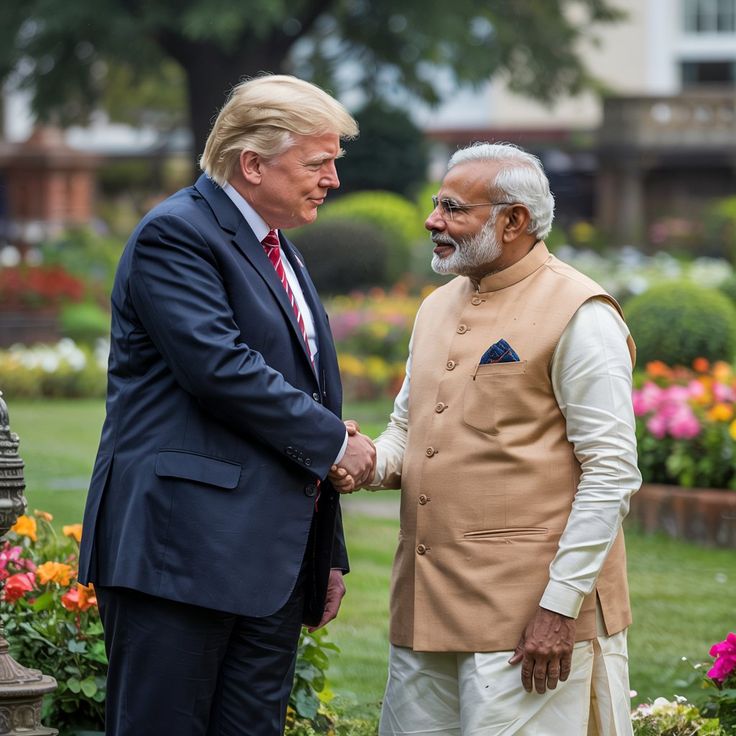A Billion Users, Zero Office, and a Billion-Dollar Profit Story
In an era where tech giants like Meta and Google employ tens of thousands across gleaming campuses, Telegram the privacy-focused messaging platform founded by Pavel Durov stands out as an audacious outlier. As of 2025, Telegram boasts over 1 billion monthly active users, a valuation of approximately $30 billion, and has achieved profitability with annual revenues surpassing $1 billion. Even more remarkable? The company reportedly operates with only around 30 full-time employees, all working remotely, with no physical headquarters anywhere in the world.
Telegram’s lean structure, relentless focus on privacy, and engineering-first culture have made it a symbol of modern, minimalist innovation. Durov, who has been called “the world’s most independent tech founder,” built Telegram without traditional venture capital, maintaining complete ownership and control over the platform. The company’s journey from an idea born in exile to one of the world’s largest messaging apps is a study in efficiency, vision, and unorthodox leadership.
The Genesis: From VKontakte to Telegram
Telegram’s story begins with Pavel Durov’s earlier success and struggle with VKontakte (VK), Russia’s most popular social networking platform. After co-founding VK in 2006 and turning it into Russia’s answer to Facebook, Durov was forced out in 2014 following government pressure over censorship demands. Choosing freedom over compliance, Durov left Russia, taking with him his ideals of privacy, speed, and independence.
That same year, Telegram emerged as a secure, cloud-based messaging app designed to prioritize user freedom. Durov and his brother Nikolai Durov, a mathematical genius and programmer, created Telegram’s custom encryption protocol, MTProto, which remains at the heart of its architecture today. Their goal was simple yet revolutionary: build a communication platform that cannot be controlled by governments or corporations.
Scaling to a Billion Users with Minimal Staff
In the world of technology, scaling to one billion users usually demands massive teams, complex management layers, and extensive infrastructure. Telegram defied that logic entirely. Reports and internal insights suggest that the company operates with roughly 30 full-time engineers and staffers, each handling vast areas of responsibility. The team works entirely remotely, often from undisclosed locations across Europe, Asia, and the Middle East.
This ultra-lean approach was made possible by automation, efficient coding practices, and distributed architecture. Telegram’s systems are designed to self-manage at scale, with minimal human oversight. Its infrastructure is spread across multiple data centers worldwide, ensuring speed and reliability without requiring physical offices or large operations teams.
Unlike traditional companies that rely heavily on HR departments, marketing divisions, and bureaucracy, Telegram runs almost like a software cooperative of elite engineers. Employees are chosen through highly selective recruitment, with Durov himself reportedly reviewing code samples and resumes personally.
Privacy and Philosophy: Durov’s Manifesto for Digital Freedom
At its core, Telegram’s philosophy is built on three pillars: privacy, speed, and independence. Durov has consistently rejected government requests to weaken encryption or share user data, famously saying, “Privacy isn’t for sale, and human rights shouldn’t be compromised for profit.”
Telegram’s privacy model, however, is nuanced. While it is often portrayed as “end-to-end encrypted,” only Secret Chats use true end-to-end encryption meaning only the sender and receiver can read messages. Regular cloud chats, which sync across devices, are encrypted between the client and Telegram’s servers, allowing faster access and multi-device functionality.
Despite this design trade-off, Telegram maintains a strong reputation for security. It collects minimal user data and refuses to show invasive targeted ads based on personal information an increasingly rare stance in today’s data-driven internet economy.
Profitability Arrives: $1 Billion Revenue and Counting
For much of its early life, Telegram operated without a clear revenue model. Durov financed the company personally after cashing out of VK, pouring hundreds of millions into maintaining servers and expanding the platform. That changed in 2021, when Telegram introduced monetization features and by 2024, the company achieved profitability, a rare feat in the messaging app industry.
Telegram’s $1 billion annual revenue milestone came from three main sources:
- Telegram Premium:
A paid subscription service that offers power users advanced features—like 4GB file uploads, faster downloads, exclusive stickers, and enhanced limits on channels and folders. Millions of users have signed up, providing a steady revenue stream without ads in private chats.
- Advertising in Public Channels:
Telegram introduced privacy-conscious ads for large public channels with over 1,000 subscribers. These ads don’t rely on user data; instead, they target audiences by channel content. The system allows channel owners to share in ad revenue, encouraging creators to grow communities responsibly.
- Partner Ecosystem and Mini Apps:
Telegram’s expansion into mini apps, bots, and digital payments has turned it into a thriving ecosystem. From e-commerce bots to educational apps, this mini app economy generates additional income while empowering developers worldwide to build within Telegram’s ecosystem.
Together, these revenue streams allowed Telegram to report a positive balance sheet for the first time in 2024, with profits projected to grow through 2025 and beyond.
The $30 Billion Valuation: Real or Aspirational?
Telegram’s reported $30 billion valuation reflects both optimism and potential. Analysts note that while the company’s revenues have grown sharply, its valuation is based more on user base scale and brand equity than traditional earnings multiples.
Despite never taking venture capital, Telegram did secure financing through convertible bonds and debt instruments, allowing it to maintain independence while funding growth. These strategic moves gave the company flexibility without sacrificing Durov’s complete ownership a contrast to most tech unicorns.
If Telegram were to go public, experts believe it could rival or even surpass valuations of mid-tier social networks, especially given its billion-user reach and expanding ecosystem.
Remote Empire: The Power of a 30-Person Workforce
Perhaps the most astounding aspect of Telegram’s story is its ability to function as a multi-billion-dollar enterprise with a workforce smaller than a medium-sized startup. Each of the 30 or so employees handles enormous scope from infrastructure and cryptography to UX design and marketing. Telegram’s leadership culture prioritizes autonomy and efficiency, avoiding traditional managerial hierarchies.
There are no “offices,” no corporate retreats, and no HR bureaucracy. Instead, Durov and his team coordinate remotely, using Telegram itself for communication. This model reduces overhead and keeps the company agile. Telegram’s cost-to-user ratio is among the lowest in the world a key factor in its profitability.
Encryption and Controversies
Telegram’s privacy-first approach has not been without controversy. Governments in countries like Russia, Iran, and India have at times blocked or restricted access to the platform, citing its use by political activists or extremist groups. Durov has resisted censorship demands, often at significant financial and logistical cost.
At the same time, privacy researchers have pointed out that Telegram’s default chats are not end-to-end encrypted, leading to misconceptions among users. Security experts urge Telegram to expand its encryption by default a move Durov says would compromise cloud syncing, one of the app’s most beloved features.
Still, Telegram continues to score highly in independent privacy rankings and remains a trusted platform for journalists, dissidents, and privacy advocates worldwide.
Regulatory Challenges and Legal Scrutiny
As Telegram’s influence has grown, so has scrutiny from regulators. In 2024, French authorities launched an investigation into the platform’s alleged role in facilitating illegal content distribution. Telegram responded by cooperating with local agencies while maintaining its stance on protecting user privacy within legal boundaries.
Similar challenges have emerged across Europe and Asia, where governments have sought access to encrypted data. Telegram’s response remains consistent: it refuses to build backdoors or weaken encryption for any government.
Despite these hurdles, Telegram’s user base continues to surge, particularly in regions like South Asia, Eastern Europe, and Latin America where distrust of traditional institutions fuels demand for secure communication tools.
Durov’s Vision: The “Encrypted Internet”
Pavel Durov’s long-term vision for Telegram extends far beyond messaging. In recent statements, he hinted at developing a decentralized digital ecosystem built around Telegram integrating payments, digital identity, and commerce. This vision aligns with the rise of The Open Network (TON) blockchain, which has grown rapidly as part of Telegram’s extended ecosystem.
Through TON-based mini apps and wallets, Telegram is positioning itself as a super-app for privacy-conscious users, blending messaging, finance, and AI-powered services into one secure environment.
Lessons from Telegram’s Journey
Telegram’s evolution offers valuable lessons for entrepreneurs and the tech industry at large:
- Efficiency Trumps Size:
A lean, elite team can outperform massive organizations if empowered with autonomy and purpose. - Privacy Can Be Profitable:
By respecting users instead of exploiting their data, Telegram proved that ethical tech can still generate strong revenue. - Independence Has Power:
Without shareholders or venture investors dictating strategy, Durov has built Telegram entirely on his terms a rarity in today’s tech landscape. - Engineering-Led Culture Wins:
By focusing on quality code, scalability, and security, Telegram shows that a small group of brilliant engineers can outmaneuver corporate giants.
The Road Ahead
As Telegram enters its second decade, it stands at a pivotal moment. With a billion users, growing revenue, and a strong brand identity, the company now faces challenges of regulation, misinformation, and content moderation issues that have tested every major tech platform.
Durov’s refusal to compromise on privacy or sell equity keeps Telegram unique, but it also limits access to capital and corporate partnerships. Balancing growth, compliance, and independence will define its next phase.
Still, the numbers speak for themselves: 1 billion users, $1 billion in annual revenue, a $30 billion valuation, and just 30 full-time employees. In an industry obsessed with scale, Telegram’s story is proof that sometimes, less truly is more.
Related News: Read More






